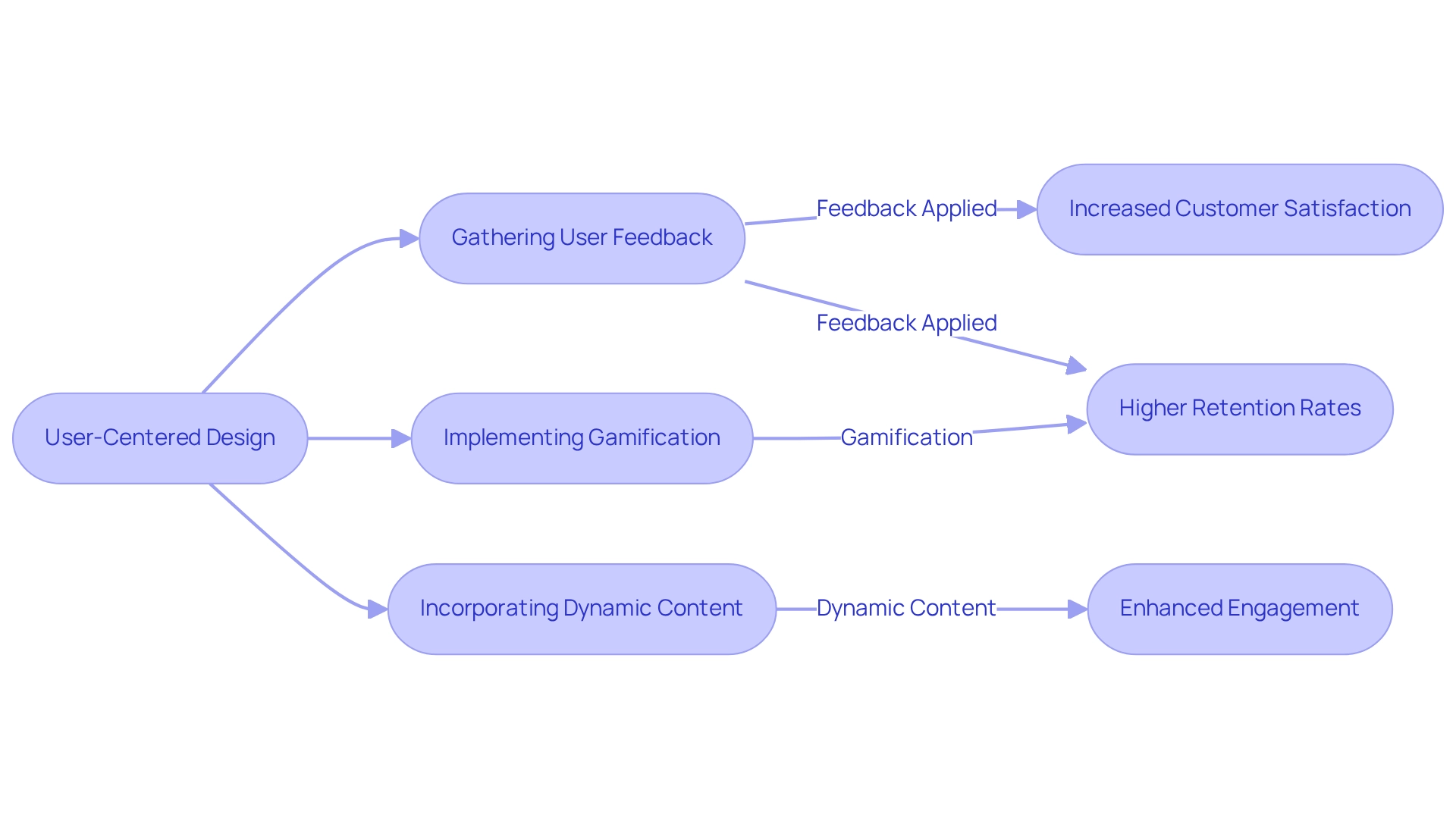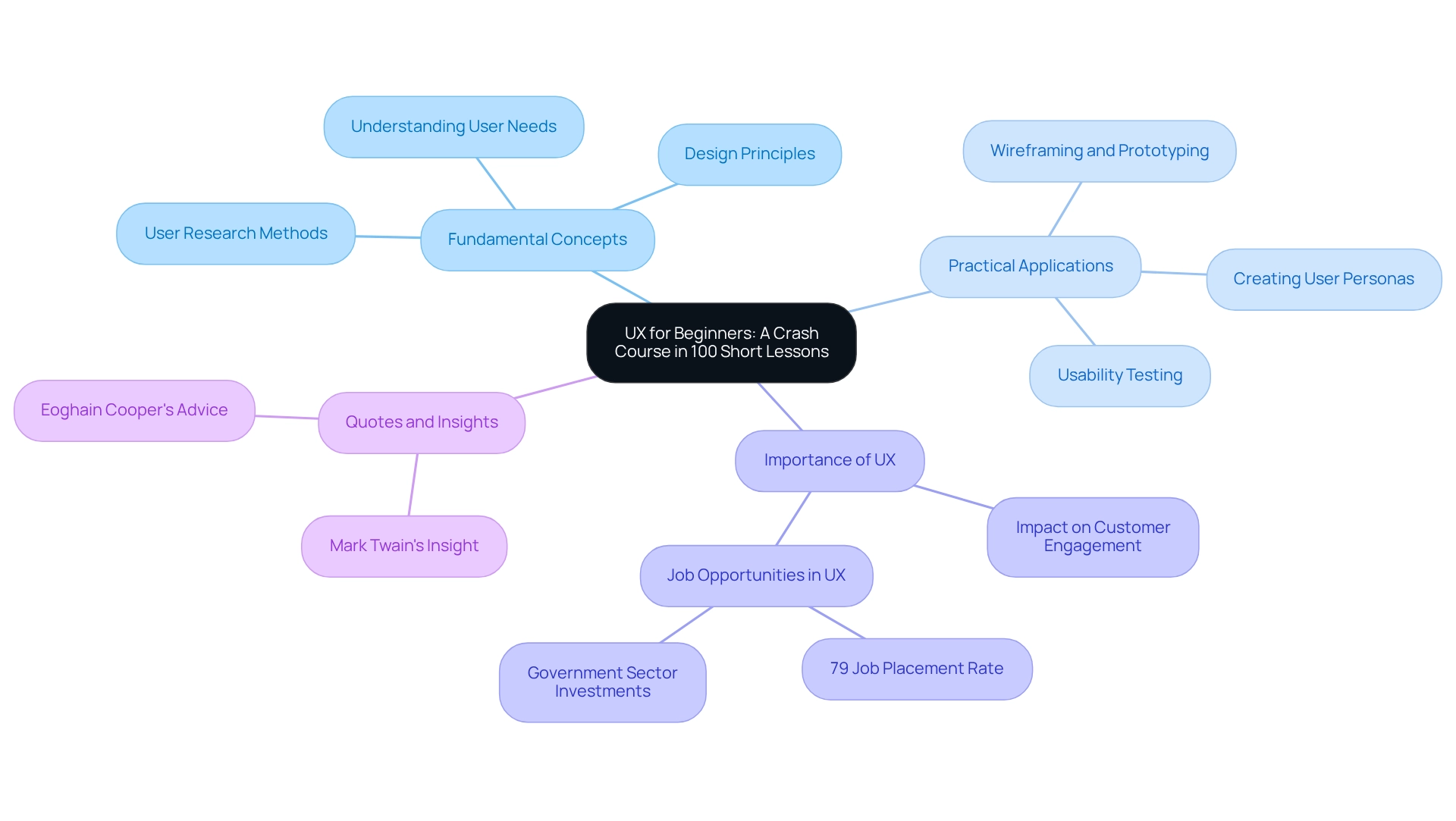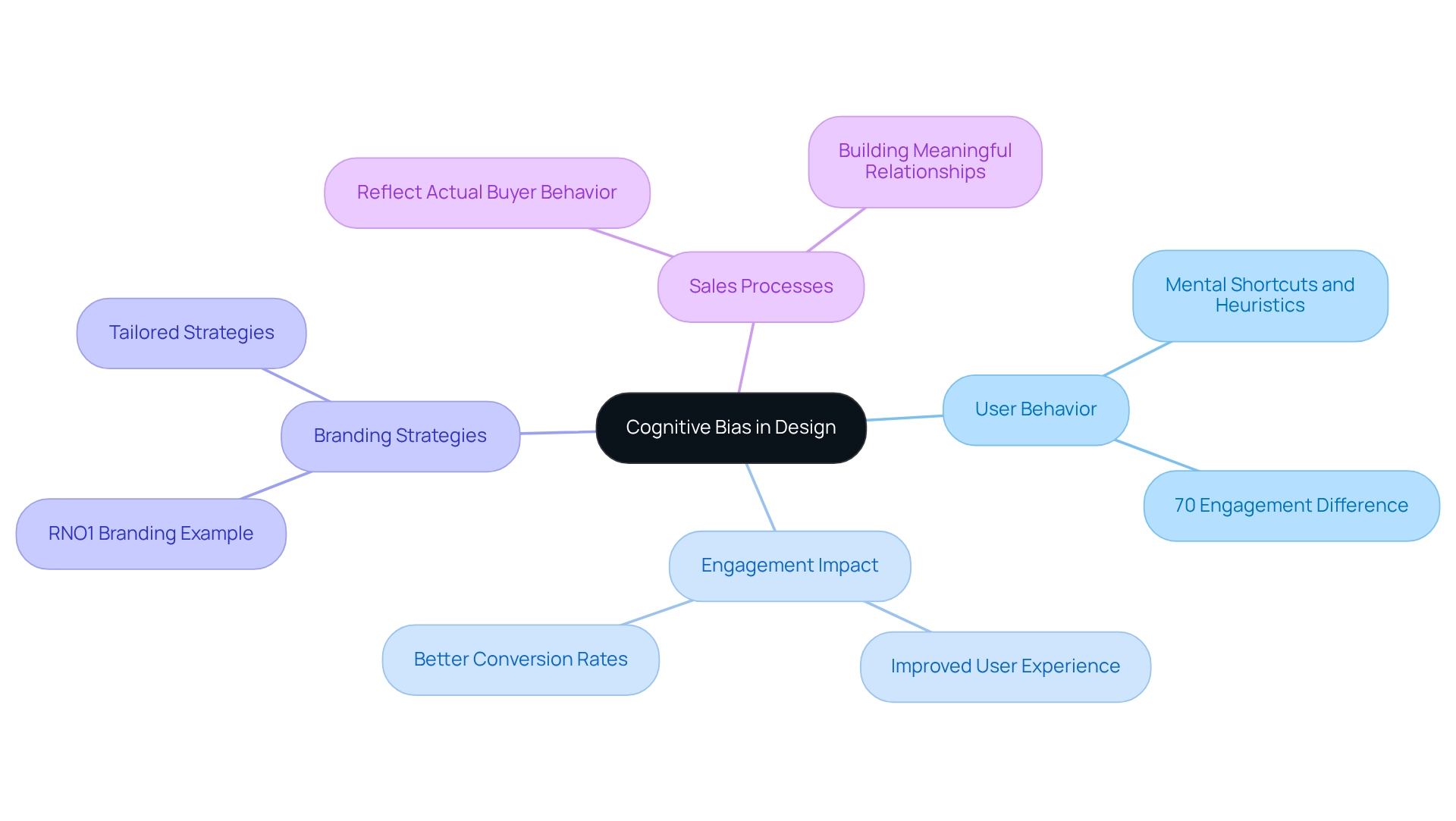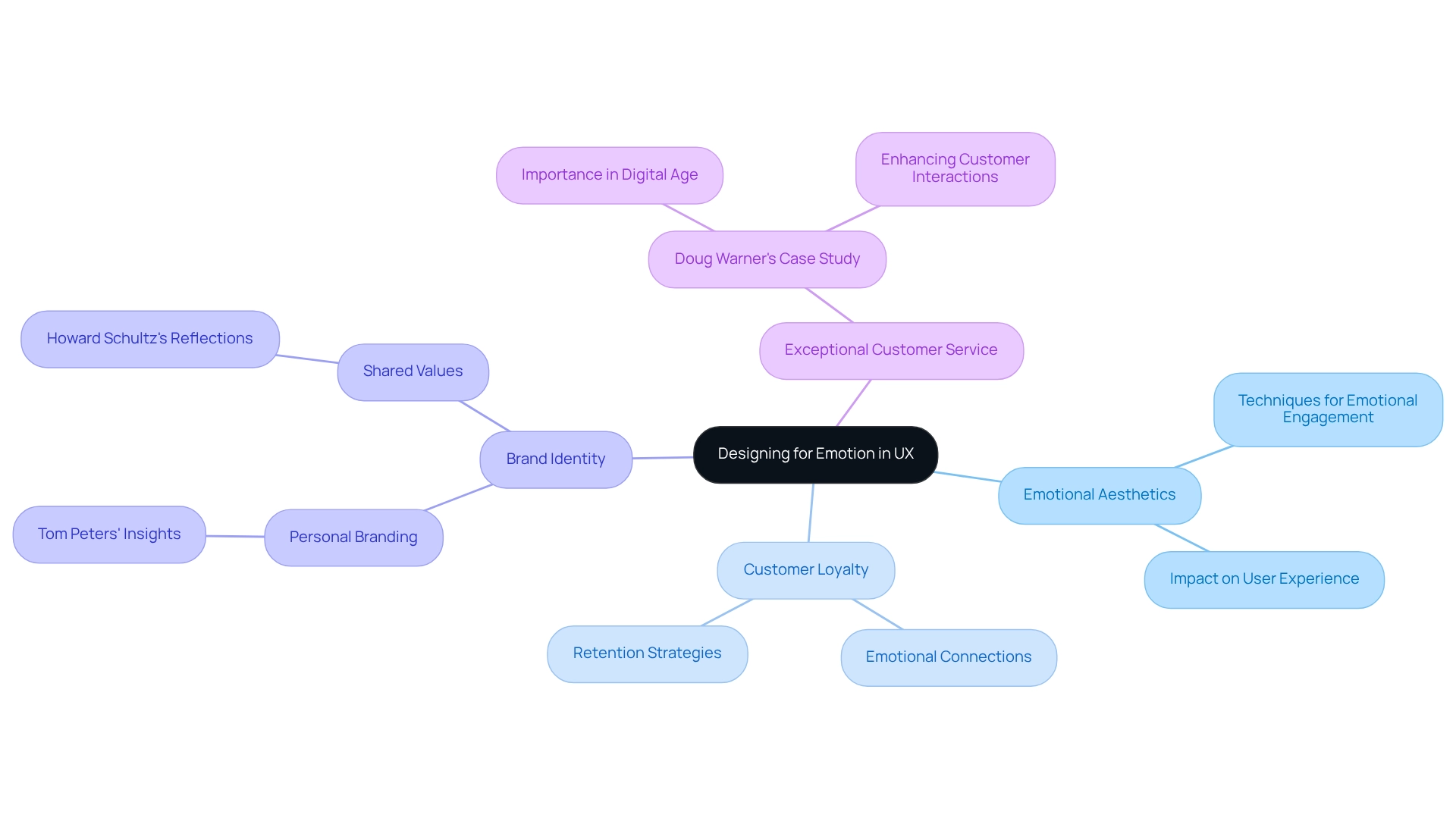Overview
The article titled "10 Best UX Books for Tech Startup Founders in 2025" seeks to address a common challenge faced by many tech startup founders: the need for effective user experience (UX) strategies. In today's competitive landscape, understanding and implementing UX can feel overwhelming and, at times, disheartening. This article recognizes that struggle and aims to provide a supportive solution by identifying essential literature that can guide founders on their journey.
While the article does not delve into direct content, it suggests that the selected books will offer invaluable insights into user-centered design, emotional engagement, and practical methodologies. These elements are crucial for building successful digital products that resonate with users. By exploring these resources, founders can find the guidance they need to navigate the complexities of UX, ultimately fostering a more profound connection with their audience.
As you embark on this journey, remember that you are not alone. Many have faced similar challenges, and the insights from these books can illuminate your path forward. Embracing user experience as a priority can lead to transformative outcomes for your startup, nurturing both your vision and your users’ needs.
Introduction
In the ever-changing world of digital interaction, many tech startups find themselves grappling with the challenge of effectively merging user experience (UX) design with branding. This struggle can feel overwhelming, as the pressure to stand out and succeed mounts. RNO1 emerges as a beacon of hope in this landscape, offering transformative strategies that not only enhance customer engagement but also lead to tangible business results.
By harnessing innovative technologies and adaptable support models, RNO1 positions itself as a nurturing partner in the journey of digital growth, particularly within the credit sector. This article explores insights from leading experts and essential literature that highlight the significance of user-centric design, practical research techniques, and emotional connections in creating meaningful digital experiences.
As startups navigate the complexities of the digital marketplace, embracing these principles will be crucial for building loyalty and achieving sustainable growth. Together, we can foster a thriving community where every startup has the opportunity to flourish.
RNO1: Transformative Strategies for UX Design and Branding
In today's fast-paced digital landscape, many tech startup founders grapple with the challenge of creating impactful online experiences. The pressure to stand out can feel overwhelming, especially when (UX) seem out of reach. This is where RNO1 steps in, offering innovative approaches that seamlessly blend branding and UX, resulting in tailored to individual needs.
Through their , RNO1 harnesses cutting-edge technologies to enhance customer engagement, ultimately driving success in the credit sector. They understand that being a vendor is not enough; they strive to be a , focusing on delivering measurable success for tech startups like yours. By employing methodologies such as user research and , RNO1 ensures that your unique challenges are met with effective solutions.
Their , including Revolve and Retrn, provide ongoing support and adaptability to ever-evolving market trends. This positions RNO1 as an invaluable ally for modern brands, encouraging differentiation in a competitive environment. The increasing demand for is undeniable; according to the , a report by UserGuiding reveals that have noted this rise. Moreover, consider the financial implications of neglecting user experience: a case study illustrates how due to a simple oversight in website functionality. Such examples highlight the critical nature of prioritizing the best UX books, as RNO1's unwavering dedication to understanding client requirements and delivering significant digital solutions establishes them as a leader in the branding and UX field. They are particularly attuned to the distinct obstacles technology companies face in building a robust online presence. With RNO1 by your side, you can feel confident in navigating these challenges, knowing that you have a compassionate partner committed to your success.
Customers Know You Suck by Debbie Levitt: Insights on User-Centric Design
In 'Customers Know You Suck', Debbie Levitt offers a candid analysis of user-centered design principles, providing new businesses with a guide to enhance their from the . Many startups struggle to connect with their users, leading to frustration and missed opportunities. Levitt's book, considered among the best UX books, outlines practical strategies for , enabling businesses to pinpoint gaps in customer engagement. By applying Levitt's frameworks, which are discussed in some of the best UX books, startups can and boost customer satisfaction.
Statistics reveal that user-focused approaches can significantly influence . For instance, apps that utilize gamification techniques can experience , as noted in recent studies. Moreover, incorporating video material into websites has been demonstrated to enhance engagement time by as much as 88%. This highlights the efficacy of dynamic content in attracting attention. Such data emphasizes the importance of assessing behavior, satisfaction, and engagement to enhance strategy development.
Levitt highlights the from users in enhancing design strategies, as discussed in the best UX books. By proactively seeking and applying customer insights, new ventures can develop more intuitive and enjoyable experiences. Consider a tech startup that frequently collects client feedback; they were able to pivot their product features based on customer input, resulting in a significant increase in satisfaction and retention. This approach not only aligns with user expectations but also fosters loyalty and long-term engagement. As Levitt aptly points out, comprehending your customers is essential to steering clear of the traps of ineffective planning and ensuring that your offerings connect in a competitive market.
RNO1 exemplifies this principle through its , such as with EOS Network Foundation, where they reshaped the to drive innovation. Furthermore, RNO1's partnerships with different tech startups, including Amount and Spring Labs, demonstrate how can enhance user interactions and stimulate growth. As Masha Panchenko, a skilled editor and project manager, mentions, "Ready to experience firsthand how creativity can transform your business? Reach out to us and discover the impact of tailored design solutions on your unique goals and objectives.

Just Enough Research by Erika Hall: Practical Research Techniques for Designers
Just Enough Research' by Erika Hall is an invaluable resource for designers, especially for those embarking on new ventures. It highlights the that is tailored to specific project needs, enabling startups to derive meaningful insights without the weight of extensive resources. This approach is particularly vital for to embrace effectively.
Hall illustrates how , which is crucial in today’s competitive environment. For instance, consider One Medical's homepage redesign; they aimed to understand customer preferences concerning how information is presented and the criteria for choosing primary care physicians. Through patient interviews, they learned that convenience, availability, and gender are top priorities for individuals selecting doctors. This understanding prompted a redesign of their landing pages, ensuring that the most relevant details were highlighted for prospective members at every stage of their decision-making process.
Consequently, One Medical successfully guided prospective members to the information they valued most, showcasing the . Startups can effectively utilize these techniques, ensuring their products resonate deeply with users. By accentuating the importance of , Hall provides a framework that empowers designers to make informed decisions, which is discussed in the , ultimately leading to better product outcomes.
Furthermore, the idea of validated learning underscores the necessity of , helping products stay relevant in a rapidly evolving market.

The User Experience Team of One by Leah Buley: Solo UX Design Strategies
Leah Buley's 'The User Experience Team of One' addresses a common challenge faced by solo : the struggle to manage research, development, and testing processes on their own. This situation can feel overwhelming, especially for founders who juggle multiple roles. The emotional toll of trying to provide without the support of a large team can be significant.
However, Buley's book is considered one of the best UX books as it offers that empower these individuals to with confidence. By sharing her insights, she provides a nurturing solution that encourages founders to embrace their multifaceted roles and thrive in their endeavors.
This guide is not just a resource; it's among the , serving as a companion for those on a , reminding them that they are not alone in their experiences.
User Experience Revolution by Paul Boag: The Evolution of UX in Digital Products
In '', Paul Boag highlights a crucial challenge for many tech startups: the transformative evolution of UX design, which is discussed in some of the , and its essential role in crafting that resonate with users. He compassionately underscores that new businesses can gain a significant by prioritizing . This focus requires a commitment to , guided by user feedback and the shifting landscape of market trends. As we look ahead to 2025, Boag's insights remind us that the best UX books highlight the profound importance of UX in digital product development; it is vital for creating products that genuinely connect with users.
RNO1 exemplifies this approach through its impactful partnerships with organizations like the EOS Network Foundation, Microsoft, and Spring Labs. These collaborations have redefined digital brands and user interactions, fostering an environment ripe for innovation. Research shows that companies embracing strong UX strategies, like those discussed in the best UX books, experience significant boosts in customer satisfaction and retention rates. For instance, startups that effectively utilize , such as Statsig, can refine their UX through experimentation and insights, leading to more informed creative decisions.
Moreover, the use of cookies on websites plays a crucial role in ensuring optimal interactions for visitors. This enables tailored engagements that enhance participation. Real-life case studies illustrate this journey, showcasing how startups have successfully transformed their services by focusing on visitor-centric design. A recent initiative by Red Roof Inn, for example, achieved a remarkable 10% increase in turnover by leveraging data on external factors like flight cancellations and weather conditions to tailor their marketing strategies. This underscores the power of data-driven UX choices and their potential to yield tangible business outcomes, as highlighted in the best UX books, which emphasize that a steadfast commitment to not only enhances product appeal but also fosters enduring customer loyalty.
As Laci Loew insightfully notes, organizations that prioritize gain a competitive advantage and realize substantial ROI, and the best UX books provide vital insights for tech founders navigating the complexities of UX design in 2025. By embracing these principles, they can ensure their products meet the evolving needs of clients while standing out in a crowded marketplace.

UX for Beginners: A Crash Course in 100 Short Lessons by Joel Marsh
For new business founders, navigating the complexities of can feel overwhelming. With so much to learn and consider, it's easy to feel lost in a sea of information. This is where Joel Marsh's '' comes in as a nurturing guide, offering a through 100 concise lessons. Each lesson is designed to be easily digestible, focusing on fundamental concepts and their practical applications. This thoughtful approach not only accelerates the learning curve for those new to UX but also equips founders with effectively.
As more businesses recognize the and satisfaction, this book is considered among the for those eager to adopt best practices in their digital offerings. Consider the encouraging statistic that 79% of graduates from the UX Design Institute’s Professional Diploma in UX Design successfully secure employment after completing the course. This underscores the importance of .
Mark Twain once wisely noted, "It’s one thing to collect masses of data, but unless you have a , it won’t really be of much use." This sentiment resonates deeply with the organized teachings in Marsh's book, which emphasize the need for a clear approach to UX creation. Furthermore, the growing trend of government entities prioritizing UX as part of their highlights the increasing significance of UX across various sectors. For new business founders, this book is not just a resource; it’s among the best UX books that serves as a to remain competitive and successful in a rapidly evolving market.

Don't Make Me Think by Steve Krug: Principles of Usability in Design
serves as a cornerstone in the realm of usability, emphasizing the need for in digital products. Many new businesses struggle to capture and retain customer attention in a competitive landscape, often because their interfaces demand too much cognitive effort from users. This is where Krug’s insights become invaluable. His emphasis on creating highlights a crucial need for startups to prioritize , ensuring that every interaction feels effortless and inviting.
As we look ahead to 2025, the significance of remains paramount. Research indicates that a staggering 70% of users abandon websites due to poor usability. This statistic underscores the pressing need for startups to embrace . By applying Krug's principles—like simplifying navigation and minimizing unnecessary complexity—new enterprises can craft experiences that truly resonate with their audience.
poignantly notes that simplifying complex ideas requires both brilliance and courage. This sentiment resonates deeply within the sphere of intuitive design. Achieving simplicity in aesthetics is not just a skill; it’s a pathway to enhancing user engagement and satisfaction. It’s about making every user feel valued and understood.
Expert insights further reinforce the importance of intuitive aesthetics. Leah Buley, Sr. Director of Consumer Insights and User Research, emphasizes that ensures that technology uplifts our humanity rather than detracts from it. This perspective aligns beautifully with the case study ',' which illustrates that effective design must address real-life challenges while anticipating individual needs, rather than merely engaging in abstract discussions.
Startups that have successfully embraced intuitive design reveal the tangible benefits of these principles. By prioritizing usability, they not only enhance customer satisfaction but also cultivate loyalty, paving the way for in a rapidly changing digital marketplace. It’s a journey that requires empathy, understanding, and a commitment to creating experiences that truly matter.
Design for Cognitive Bias by David Dylan Thomas: Understanding User Behavior
In 'Design for Cognitive Bias', David Dylan Thomas highlights a significant challenge that many tech startup founders face: the profound impact of . These biases can subtly influence interactions, leading to decisions that may not align with users' true needs. Recognizing this issue is crucial for startups aiming to create products that truly engage their audience. By understanding the mental shortcuts and heuristics that shape choices, founders have the opportunity to design solutions that resonate with users' expectations and desires.
Research indicates that cognitive biases can lead to , with some biases affecting decision-making processes by as much as 70%. This understanding not only enhances the user experience but also promotes better . For tech startups striving to innovate in a competitive landscape, this knowledge becomes an invaluable asset. Furthermore, the critique of vignette studies underscores the importance of applying these insights in real-world contexts, reinforcing the need to grasp cognitive biases in practical situations.
As Leigh Ann Tucker observed, , particularly through its rebranding of Founder's Haven, exemplifies how such insights can bolster digital marketing effectiveness. amplifies these insights, demonstrating how tailored strategies can lead to measurable improvements in engagement and conversion rates. Additionally, acknowledging that highlights the broader implications of cognitive biases, illustrating their influence on overall business strategies and relationships. By embracing these insights, founders can cultivate a deeper connection with their audience, ultimately fostering a supportive and thriving community.

Psychology for Designers by Joe Leech: Applying Psychological Insights to UX
In the fast-paced world of , founders often grapple with the challenge of truly . This struggle can lead to products that miss the mark, leaving both creators and users feeling disconnected. Joe Leech's 'Psychology for Designers' offers a compassionate approach to this problem, emphasizing the vital importance of grasping the motivations and behaviors of individuals. By providing , the book arms founders with the necessary tools to deeply with their audience and foster genuine engagement.
Leech highlights that adopting a is not just beneficial but essential for . When products are designed with users' needs in mind, they tend to yield higher satisfaction rates. This aligns with the perspective of industry leaders like Jony Ive, who insightfully noted, 'Very often creation is the most immediate way of defining what products become in people’s minds.' Such insights remind us that effective creation can significantly shape product perception.
Moreover, Leech's work delves into how can be seamlessly woven into the creation process, ensuring interfaces are straightforward, intuitive, and frictionless. This thoughtful method not only enhances but also encourages individuals to explore products with confidence, ultimately leading to increased involvement and loyalty.
A compelling case study, ',' beautifully illustrates this concept. It demonstrates that by centering the creation process around clients, companies can achieve greater commercial success and customer satisfaction. By embracing these principles, tech startups can that promote growth and retention, creating a supportive environment where both founders and users can thrive together.
Designing for Emotion by Aarron Walter: Creating Emotional Connections in UX
Aarron Walter's 'Designing for Emotion' explores the vital role of in for individuals. This insightful book provides practical techniques for forging emotional bonds, which are essential for and enhancing satisfaction. For tech startups, the ability to evoke emotions through design is not merely advantageous; it is crucial for standing out in a crowded marketplace. Research suggests that can profoundly affect , with evidence showing that brands prioritizing emotional engagement experience a significant boost in client retention. Walter emphasizes that understanding individuals' emotional responses can lead to more effective solutions, ultimately in the competitive tech landscape.
As Tom Peters wisely notes, "In today’s business world, everyone is the CEO of , known as 'You.' 'You' is a critical aspect of personal and professional success." This underscores the significance of both individual and brand identity in fostering emotional connections. Additionally, Howard Schultz's reflections on shared values highlight how emotional design can resonate with the values that bind us, thereby strengthening brand loyalty.
Moreover, Doug Warner's case study illustrates the importance of in the digital age, showcasing how emotional connections can enhance customer service interactions. By embracing the principles outlined in 'Designing for Emotion,' startups can create that could be considered among the best UX books, resonating profoundly and ensuring they not only stand out but also flourish in 2025 and beyond.

Conclusion
In the ever-evolving digital landscape, many tech startups grapple with the challenge of creating meaningful connections with their users. This struggle often leads to frustration, as they find it difficult to engage customers in a way that fosters loyalty and drives growth. RNO1 emerges as a transformative ally in this journey, skillfully merging user experience design with branding to craft impactful digital solutions tailored for startups. By embracing innovative strategies and a user-centric approach, RNO1 not only enhances customer engagement but also propels measurable business success, especially within the credit sector.
Understanding user needs is paramount, as emphasized by leading experts in the field. Startups that prioritize user-centric design principles are better positioned to cultivate loyalty and achieve sustainable growth in a competitive marketplace. The insights gleaned from various thought leaders in UX design underscore the necessity of practical research techniques, emotional connections, and iterative processes in shaping meaningful digital experiences. As startups adopt these principles, they can navigate the complexities of the digital world with newfound confidence.
Continuous feedback and adaptation play a crucial role in ensuring that products resonate with users, ultimately leading to improved satisfaction and retention. The integration of effective UX design with robust branding strategies is not just an option for tech startups; it is essential for thriving in today's fast-paced digital environment. By partnering with experts like RNO1 and embracing a user-first mindset, startups can unlock their full potential, nurturing a loyal customer base and driving long-term success. The journey toward digital excellence truly begins with a heartfelt commitment to understanding and prioritizing the user experience.
Frequently Asked Questions
What challenges do tech startup founders face in creating online experiences?
Tech startup founders often struggle with the pressure to stand out in a fast-paced digital landscape, finding effective branding and user experience (UX) to be overwhelming.
How does RNO1 assist tech startups in improving their online presence?
RNO1 offers innovative approaches that blend branding and UX, enhancing customer engagement and driving success, particularly in the credit sector. They act as collaborative partners focused on delivering measurable success through methodologies like user research and iterative development.
What are RNO1's subscription models, and how do they benefit startups?
RNO1 provides flexible subscription models, including Revolve and Retrn, which offer ongoing support and adaptability to changing market trends, positioning them as valuable allies for modern brands.
Why is user experience (UX) important for businesses?
Effective UX is crucial as neglecting it can lead to significant financial losses, as illustrated by Citibank’s $500 million loss due to website functionality issues. Additionally, a user-focused approach can greatly influence customer retention and engagement.
What insights does Debbie Levitt's book 'Customers Know You Suck' provide for startups?
Levitt's book offers a candid analysis of user-centered design principles, providing practical strategies for understanding user needs and enhancing customer engagement, which can improve product-market fit and customer satisfaction.
How can startups enhance customer engagement according to recent studies?
Startups can enhance customer engagement by utilizing gamification techniques and incorporating video content into websites, which has been shown to significantly increase retention rates and engagement time.
What role does ongoing user feedback play in improving design strategies?
Ongoing feedback from users is essential for enhancing design strategies, allowing startups to develop more intuitive experiences and align their offerings with user expectations, fostering loyalty and long-term engagement.
Can you provide an example of effective user-centered design?
One Medical's homepage redesign is an example, where they conducted patient interviews to understand customer preferences, leading to a redesign that highlighted relevant information for prospective members, improving their decision-making process.
What is the significance of conducting tailored research for startups?
Tailored research allows startups to derive meaningful insights without extensive resources, helping them adopt user-centered design practices effectively and enhance engagement and retention.
What does the concept of validated learning emphasize for product development?
Validated learning underscores the necessity of continuous testing and feedback loops, ensuring that products remain relevant in a rapidly evolving market.




